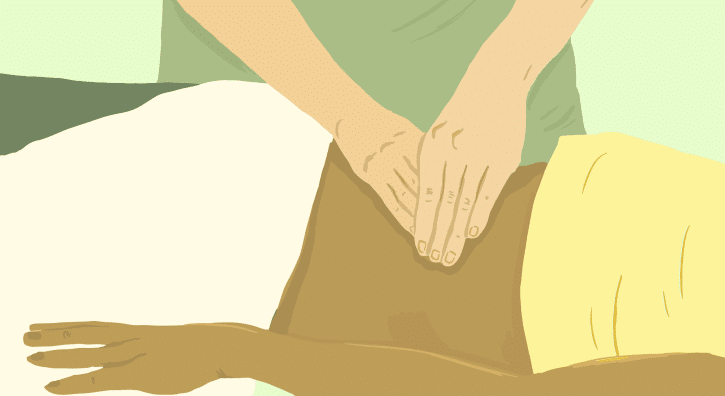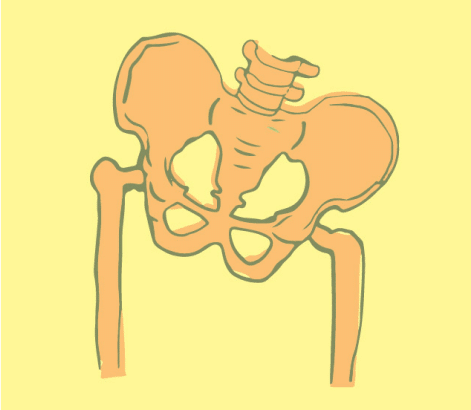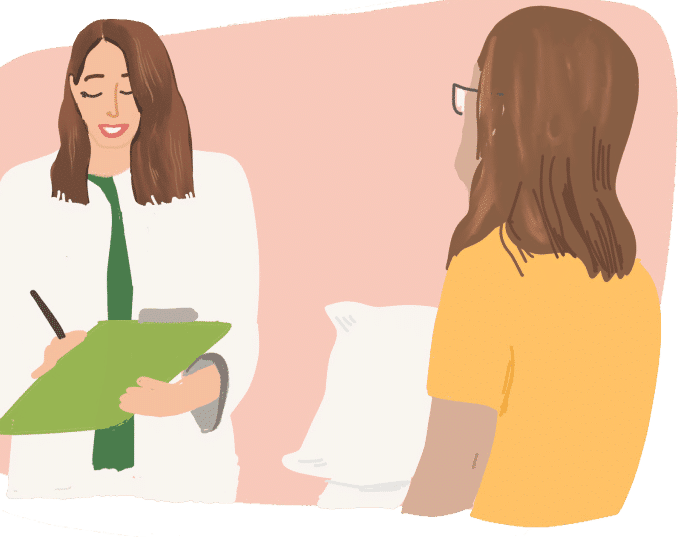

Symptoms
- Pelvic pain can feel like a sharp, burning, throbbing, or tingling discomfort located in the vaginal canal, vulva, anal region, or perineal area
- Many women describe pain during sexual activity, sensitivity to tight-fitting clothing, and difficulty remaining seated for extended periods
- Certain movements or exercise routines can make symptoms worse
- Bladder-related issues like a strong urge to urinate, frequent bathroom visits, stinging during urination, or occasional leakage may occur
- Digestive disturbances including gas, constipation, or unpredictable bowel movements often accompany pelvic discomfort
- For some individuals, tampon use or intimacy can spark symptoms, while others notice pain arise spontaneously
- Symptom patterns differ—some women cope with consistent pain, whereas others face sporadic flare-ups

Symptoms
- Pelvic pain can feel like a sharp, burning, throbbing, or tingling discomfort located in the vaginal canal, vulva, anal region, or perineal area
- Many women describe pain during sexual activity, sensitivity to tight-fitting clothing, and difficulty remaining seated for extended periods
- Certain movements or exercise routines can make symptoms worse
- Bladder-related issues like a strong urge to urinate, frequent bathroom visits, stinging during urination, or occasional leakage may occur
- Digestive disturbances including gas, constipation, or unpredictable bowel movements often accompany pelvic discomfort
- For some individuals, tampon use or intimacy can spark symptoms, while others notice pain arise spontaneously
- Symptom patterns differ—some women cope with consistent pain, whereas others face sporadic flare-ups

Associated Diagnoses
Diagnoses such as Endometriosis, Vulvodynia, Interstitial Cystitis/Painful Bladder Syndrome, Pudendal Neuralgia, Lichen Sclerosus, Lichen Planus, and Irritable Bowel Syndrome are associated with pelvic pain and pelvic floor dysfunction.


Causes of Pelvic Pain
- Ongoing bladder and vaginal infections, along with complications affecting the gastrointestinal, urological, dermatological, or gynecologic systems
- A high percentage of chronic pelvic pain sufferers also exhibit pelvic floor muscle imbalances or tension
- Medication regimens that alter hormones—like contraceptives, acne treatments, or therapies for Endometriosis and PCOS—may contribute
- Surgeries involving pelvic organs, whether elective or childbirth-related, can lead to pain or dysfunction
- Accidents or trauma affecting pelvic bones, joints, or supporting muscles
- Movement-related issues such as leg length discrepancies, scoliosis, or unstable SI joints
- Vaginal childbirth, which can overstretch, tear, or weaken pelvic muscles and support structures
- Menopausal shifts in hormone production that reduce tissue strength and hydration
- Harm inflicted on genital tissues from cutting, mutilation, or injury
Causes of Pelvic Pain
- Ongoing bladder and vaginal infections, along with complications affecting the gastrointestinal, urological, dermatological, or gynecologic systems
- A high percentage of chronic pelvic pain sufferers also exhibit pelvic floor muscle imbalances or tension
- Medication regimens that alter hormones—like contraceptives, acne treatments, or therapies for Endometriosis and PCOS—may contribute
- Surgeries involving pelvic organs, whether elective or childbirth-related, can lead to pain or dysfunction
- Accidents or trauma affecting pelvic bones, joints, or supporting muscles
- Movement-related issues such as leg length discrepancies, scoliosis, or unstable SI joints
- Vaginal childbirth, which can overstretch, tear, or weaken pelvic muscles and support structures
- Menopausal shifts in hormone production that reduce tissue strength and hydration
- Harm inflicted on genital tissues from cutting, mutilation, or injury

Diagnostic Challenges
It’s not uncommon for women suffering from pelvic pain to endure a long, frustrating journey before receiving an accurate diagnosis. Research has shown that the average time to a correct diagnosis is around five years—and for those with conditions like Endometriosis, it can take more than a decade. This delay is often because pelvic pain mimics other common health issues such as urinary tract infections, STIs, yeast infections, or bladder disorders. As a result, many women go through cycle after cycle of misdiagnoses and ineffective treatments. When pelvic floor dysfunction is the underlying issue, conventional medical exams may come back normal, creating confusion for both the patient and healthcare providers. Often, women enter physical and occupational therapy without even knowing what the pelvic floor is, let alone that it could be responsible for their symptoms.
Diagnostic Challenges
It’s not uncommon for women suffering from pelvic pain to endure a long, frustrating journey before receiving an accurate diagnosis. Research has shown that the average time to a correct diagnosis is around five years—and for those with conditions like Endometriosis, it can take more than a decade. This delay is often because pelvic pain mimics other common health issues such as urinary tract infections, STIs, yeast infections, or bladder disorders. As a result, many women go through cycle after cycle of misdiagnoses and ineffective treatments. When pelvic floor dysfunction is the underlying issue, conventional medical exams may come back normal, creating confusion for both the patient and healthcare providers. Often, women enter physical and occupational therapy without even knowing what the pelvic floor is, let alone that it could be responsible for their symptoms.
Treatment:
How We Can Help You

For women in Los Angeles who have been struggling with ongoing pelvic pain, undergoing a pelvic floor physical and occupational therapy evaluation could finally shed light on the root cause of your symptoms. This comprehensive assessment explores your entire medical history, reviews past diagnoses, and evaluates which treatments you’ve tried—along with how effective they were. Many women arrive at this stage emotionally drained, frustrated by persistent discomfort and years of unanswered questions. During the evaluation, your physical and occupational therapists will carefully assess the health and function of your muscles, nerves, soft tissues, joints, and movement patterns. After the exam, you’ll receive a clear, detailed explanation of what’s likely contributing to your pain, followed by a customized treatment roadmap that outlines both near-term steps and long-range recovery goals. Typically, patients attend sessions once or twice per week for around 12 weeks, reinforced by individualized home exercises. To maximize your recovery, our therapists also collaborate with your other medical providers, ensuring that your care is both seamless and comprehensive. We’re here to support you every step of the way.

Treatment:
How We Can Help You
For women in Los Angeles who have been struggling with ongoing pelvic pain, undergoing a pelvic floor physical and occupational therapy evaluation could finally shed light on the root cause of your symptoms. This comprehensive assessment explores your entire medical history, reviews past diagnoses, and evaluates which treatments you’ve tried—along with how effective they were. Many women arrive at this stage emotionally drained, frustrated by persistent discomfort and years of unanswered questions. During the evaluation, your physical and occupational therapists will carefully assess the health and function of your muscles, nerves, soft tissues, joints, and movement patterns. After the exam, you’ll receive a clear, detailed explanation of what’s likely contributing to your pain, followed by a customized treatment roadmap that outlines both near-term steps and long-range recovery goals. Typically, patients attend sessions once or twice per week for around 12 weeks, reinforced by individualized home exercises. To maximize your recovery, our therapists also collaborate with your other medical providers, ensuring that your care is both seamless and comprehensive. We’re here to support you every step of the way.
How Can We Help You?
If there’s anything you’d like to ask or comment on, we invite you to fill out the form below. Be sure to include your email address so we can respond to you personally and without delay. Rest assured, any information you share will remain private and treated with the highest level of discretion and respect.

Join The Newsletter. Win a copy of our book, “Pelvic Pain Explained!”
We love getting to know our website visitors. Please tell us a little bit about yourself and get the latest info via PHRC e-newsletter!
*Subscribers automatically eligible to win our book, “Pelvic Pain Explained.”
At its heart, Pelvic Pain Explained seeks to shed light on where pelvic pain stems from, the roadblocks that frequently delay accurate diagnoses, and the often overwhelming array of treatment choices available. It also addresses the deep psychological and relational effects of living with a condition that is frequently misunderstood or overlooked.


